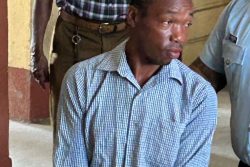The number of suspected chikungunya cases being seen at the West Demerara Regional Hospital have doubled within the past two weeks as people continue to throng the institution for treatment, a hospital official has said.
Presently, there are 13,006 confirmed cases of the mosquito-borne virus across the region, said the Caribbean Public Health Agency (CARPHA) in an update on its website on Monday. Of these, 1,870 cases were recorded from 22 of the 24 CARPHA Member States, while 11,136 cases were reported from 11 other countries. So far the agency has recorded 118 deaths.
The official at the hospital said doctors were treating over 100 patients with symptoms of the virus every day.
Most of these patients are coming from Georgetown. “We have seen an increase in the number of people coming in with symptoms of chikungunya but also what we are seeing is increased patients from Georgetown. When they come we ask them why they are not going to the Georgetown hospital and they tell us that we offer faster treatment,” the source said.
When Stabroek News visited the hospital yesterday, a doctor was checking her 100th patient with the symptoms.
The patient, a woman, cried out about striking pains in her foot as the doctor checked her temperature.
She complained miserably that she was enduring severe headaches and a hot fever.
Another woman was also observed as having signs of the virus. She is a medical worker at the hospital but said she was fearful of being treated by doctors at public hospitals because of the level of medical care persons would receive.
“…Although I’m working here, I wouldn’t come here or go to the Georgetown Hospital for treatment because the amount of treatment you get at a public hospital is shameful.
I prefer to pay and let private doctors attend to me,” she said.
The woman related that she started experiencing acute pains in her knuckles last Saturday but brushed if off as minor joint pain. “I rubbed it with coconut oil but the next day after I returned from the market the pain was all over my body… straight across my shoulders and back.
Then the fever step in,” she said.
She said the rise in the number of suspected cases is a stark indication that the Ministry of Health needed to do more work on educating people about how the virus is spread and what they should do to prevent it from infecting themselves and their families.
Chief Medical Officer Dr. Shamdeo Persaud recently said that there were nearly 2,000 suspected cases of the virus in Guyana.
However, he did indicate that the figure might be a lot more, given the number of unreported cases.








